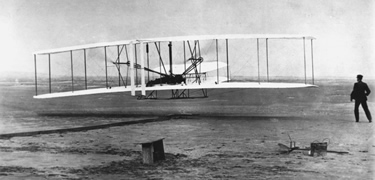

 The Accurate Reloading Forums
The Accurate Reloading Forums  THE ACCURATE RELOADING.COM FORUMS
THE ACCURATE RELOADING.COM FORUMS  Other Topics
Other Topics  Aviation
Aviation  Question on ww1 aircraft engines
Question on ww1 aircraft enginesGo  | New  | Find  | Notify  | Tools  | Reply  |  |
| One of Us |
Watching a program the other day I noticed that some of the radial engines on the biplanes had the cylinders spin around the stationary crankshaft Are these engines 2 or four cycle? It would seem that if they were four cycle the valve train would have to spin as well. Anyway I would be interested if someone could point me in the right direction or a web site it looks like the hard way to build an engine. Never rode a bull, but have shot some. NRA life member NRA LEO firearms instructor (retired) NRA Golden Eagles member | ||
|
| one of us |
I don't have the answer but having seen them at Rhinebeck Aerodrome there is a large amount of torque in those rotating rotary [radial] engines ! Very noticeable ! http://www.aviation-history.com/engines/rotary.htm This should tellyou a few things | |||
|
| one of us |
http://www.animatedengines.com/gnome.shtml They are 4-stroke and use a fuel/oil mix like 2-strokes that charges through the crankcase. | |||
|
| One of Us |
They were either on or off the ignition switch was the throttle . That rotating mass was what gave them the turning ability . The oil most used was castor oil it had the same effects when inhaled!! | |||
|
| One of Us |
Thanks for the information a very interesting engine. Never rode a bull, but have shot some. NRA life member NRA LEO firearms instructor (retired) NRA Golden Eagles member | |||
|
| One of Us |
The planes with the rotary radials actually rolled in one direction very well but were hard to roll in the other direction due to the gyroscopic effect of that huge rotating mass. | |||
|
| One of Us |
By and large the "Stationary crank, rotating cylinder" engines were two strokes, but not all of them were.... Thinking about the required oiling system to make a four scroke rotary engine like that would make any engineer start to babble incoherently.... It isn't gyroscopic effect (that would affect pitch and yaw) but rather torque and inertia Roll is inhibited by opposing torque, the issue was TURNING in one direction or the other because while you could get the aircraft to roll equally in eatier direction (often by the simple expedient of making the wings and or alerons assyymetrical to compensate) the gyroscopic effects have some counter intuative effects, due to precession on Pitch and yaw. Try to pitch up and the gyroscopic effect makes the aircraft either roll or Yaw in an unexpected direction, and theffect varies not only with speed but actual engine rpm and rotating mass.... Let's just say there were damned good reasons they stopped making rotaries... and that the later, most sucessful fighters of WW1 were mostly built with inline 4-stroke engines. And most WW2 aircraft still suffered from torquet, though not to as great a degree.... Most later WWI vintage aircraft designed around rotary engine like the LaRhone actually had the wings built assymetrically to compensate for the torque. WW2 aircraft did the same things wngs lnger on one side than the other (not that you'd notice that the wing is 6-8" longer on one side than the other... or "Stall strips" on the leading edge of one wing and to help combat other effects (look up P-Factor some time) AD If I provoke you into thinking then I've done my good deed for the day! Those who manage to provoke themselves into other activities have only themselves to blame. *We Band of 45-70er's* 35 year Life Member of the NRA NRA Life Member since 1984 | |||
|
| Powered by Social Strata |
| Please Wait. Your request is being processed... |
|
 The Accurate Reloading Forums
The Accurate Reloading Forums  THE ACCURATE RELOADING.COM FORUMS
THE ACCURATE RELOADING.COM FORUMS  Other Topics
Other Topics  Aviation
Aviation  Question on ww1 aircraft engines
Question on ww1 aircraft engines

Visit our on-line store for AR Memorabilia

